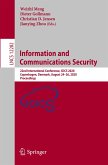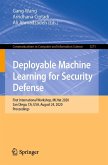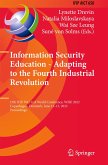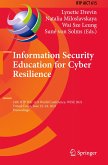Cyber security is the greatest risk faced by financial institutions today, a risk they have understood and managed for decades longer than is commonly understood. Ever since the major London banks purchased their first computers in the early 1960s, they have had to balance their dependence on those machines with the need to secure their operations and retain the trust of their customers.
Technological change in the second half of the 20th century prompted British banks to reevaluate their function as trusted protectors of wealth. In the City of London, the capital's oldest area and historically its business and commerce hub, the colossal clearing banks employed newly commercialised electronic computers-the processing power of which could transform the highly clerical clearing and settlement process. What unfolded over the following three decades was a relentless modernisation drive. Revolutionising the way that banks and other financial institutions conducted business and interacted with each other and permanently altering the speed and scale at which the United Kingdom's financial sector functioned, this rapid modernisation thrust computer security into the consciousness of bank executives and their clients alike.
Dependence on computers quickly grew, and the banks immediately realised the need to secure their new software and hardware. Focusing on the period 1960 to 1990, this book uses newly released and previously unexplored archival material to trace the origins of cyber security in the UK financial sector.
Topics and features:
Describes how institutions managed the evolving challenge of computer security in the second half of the 20th century Demonstrates continuity in banks' views of security through the prism of confidentiality, integrity and availability, and the concept of resilience Presents case studies of bank collaboration on computer security through creation of payment systems like SWIFT and CHAPS Outlines the shift from focusing on physical security measures to technical network-protection measures Explores the relationship between banks and the UK Government as bank operations became dependent on computer and network technology
This work will be of value to students and academic researchers in the history of computing, financial history, and the history of intelligence and security, as well as the general reader interested in contemporary intelligence, cyber security, and finance.
Technological change in the second half of the 20th century prompted British banks to reevaluate their function as trusted protectors of wealth. In the City of London, the capital's oldest area and historically its business and commerce hub, the colossal clearing banks employed newly commercialised electronic computers-the processing power of which could transform the highly clerical clearing and settlement process. What unfolded over the following three decades was a relentless modernisation drive. Revolutionising the way that banks and other financial institutions conducted business and interacted with each other and permanently altering the speed and scale at which the United Kingdom's financial sector functioned, this rapid modernisation thrust computer security into the consciousness of bank executives and their clients alike.
Dependence on computers quickly grew, and the banks immediately realised the need to secure their new software and hardware. Focusing on the period 1960 to 1990, this book uses newly released and previously unexplored archival material to trace the origins of cyber security in the UK financial sector.
Topics and features:
Describes how institutions managed the evolving challenge of computer security in the second half of the 20th century Demonstrates continuity in banks' views of security through the prism of confidentiality, integrity and availability, and the concept of resilience Presents case studies of bank collaboration on computer security through creation of payment systems like SWIFT and CHAPS Outlines the shift from focusing on physical security measures to technical network-protection measures Explores the relationship between banks and the UK Government as bank operations became dependent on computer and network technology
This work will be of value to students and academic researchers in the history of computing, financial history, and the history of intelligence and security, as well as the general reader interested in contemporary intelligence, cyber security, and finance.
"Cyber and the City's greatest strength is the new histories that it documents. ... This book could therefore present a richer account that interprets how this history fits into the wider scholarship. Nevertheless, for the histories that it brings to light, it will be an important work for future historians of financial technology." (Jacob Ward, Technology and Culture, Vol. 64 (2), April, 2023)









